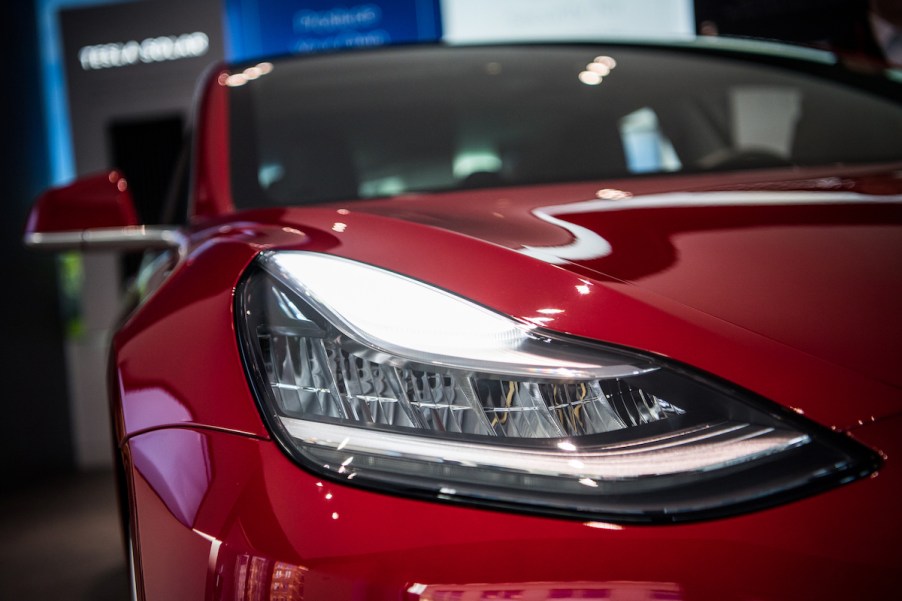
How Does Using Headlights Affect an EV’s Driving Range?
The battery is the sole power source in an EV. It powers the infotainment system, heated seats, safety features, speakers, parking cameras, and more. As such, the power they take from the battery affects the driving range in minor and major ways, with some taking miles off the overall range while others barely make a dent. Of course, the headlights are also part of the equation. So, how does using your headlights affect an EV’s driving range?
Energy consumption averages for EVs

To understand the effect of using headlights on an EV’s driving range, you first have to know how much energy the vehicle consumes on average. This is measured in kilowatt-hours (kWh) per 100 miles. According to Just Energy, kWh is a unit of measurement for how much energy the EV or any other electric appliance uses over a specific period.
For context, 1 kWh is equal to one hour of energy use at the rate of 1 kW. Consequently, if a 1 kW electrical appliance were to run for one hour, the energy would equal 1 kWh. A 500-watt device would need to run for two hours to achieve the same feat since 1 kW is equal to 1000 watts.
Nevertheless, the formula for calculating watts into kilowatt-hours is (watts × hours) ÷ 1,000. Consequently, if the 500-watt device mentioned above were to run for seven hours, it would wield 3.5 kWh.
Energy usage in EVs varies from model to model, with some offering more fuel economy than others. For instance, the 2022 Tesla Model Y AWD is one of the more fuel-efficient EVs, with an energy consumption of 27.5 kWh per 100 miles, according to the U.S. Department of Energy.
On the other hand, the 2022 Audi e-tron S’s fuel economy is rated at 53.3 kWh per 100 miles. Consequently, it’s no surprise that the Tesla Model Y offers almost 100 miles more range than the Audi, even with a smaller battery.
The Ford F-150 lightning is rated at close to 50 kWh per 100 miles but still offers an impressive 300 miles of range. However, it can only do that by having a battery with almost double the energy capacity of the Model Y.
Ultimately, most EVs average between 30 and 35 kWh per 100 miles depending on weather and the user’s driving habits.
Energy consumption by the headlights
According to The Physics Factbook, there are wattage standards for headlights. High beams are capped at about 70 watts, while low beams should be rated at no more than 60 watts. Average cars in the early to mid-2000s used 50 or 60-watt headlights. That said, even in the 1990s, some cars had 35-watt headlights.
As for modern headlights are much more energy efficient, so finding cars with 30-watt headlights is not uncommon.
How using the headlights affects the overall range
Using the (watts × hours) ÷ 1,000 formula given above for calculating watts into kilowatt-hours, a 30w headlight would use about 0.03 kWh if you leave it on for a full hour. If you only use it for the 45-minute commute back home, it translates to about 0.225 kWh.
Similarly, less fuel-efficient headlights like the 70w variants would use 0.07 kWh for an hour-long commute. Compared to the 30-35 kWh per 100 miles you get from driving your EV around town, battery usage by the headlights is negligible. Consequently, if you’ve noticed your car battery draining faster, resulting in less range, the culprit is likely not your headlights.


